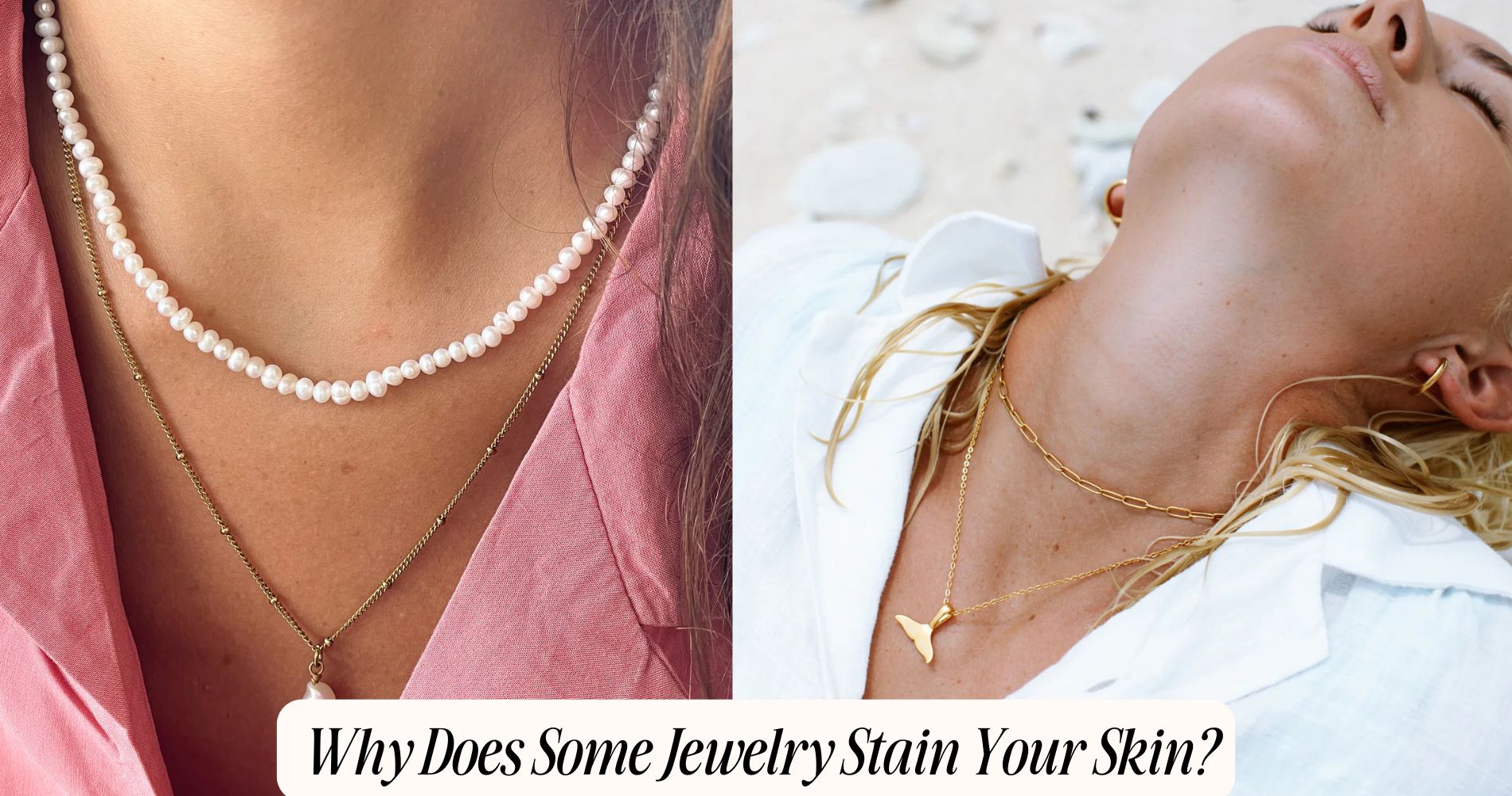
Why Does Some Jewelry Stain Your Skin?
Wondering why does some jewelry stain your skin? The answer lies in the materials used, especially metals like nickel and copper. When these metals come into contact with your skin’s natural oils and moisture, chemical reactions often result in skin discoloration. Factors like humidity and sweat can intensify this effect, making staining even more noticeable. Nickel, in particular, can also trigger allergic reactions for many wearers. However, not all jewelry causes these issues—hypoallergenic options such as surgical stainless steel or higher-quality gold can help prevent skin reactions. Knowing these factors can help you make safer, skin-friendly choices, like those in our hypoallergenic jewelry collection.
Common Metals That Cause Staining
When you slip on a piece of jewelry, it mightn't cross your mind that some metals can leave unsightly marks on your skin. One of the most common culprits is nickel, a metal found in many inexpensive jewelry pieces. If you've ever noticed a reddish rash or discoloration after wearing a ring or earrings, you might be experiencing nickel sensitivity. This allergic reaction occurs when your skin comes into contact with nickel, leading to irritation and staining.
Another common offender is copper. When exposed to moisture and air, copper undergoes oxidation, forming a greenish patina that can easily transfer onto your skin. If you've worn a copper bracelet or a piece with copper alloys, you've likely seen this discoloration manifest as green or brown stains.
Both nickel and copper are popular in costume jewelry due to their affordability, but they can cause more than just surface stains. Understanding these common metals helps you make informed choices about your jewelry.
Opt for hypoallergenic materials like stainless steel or gold to avoid these unsightly marks and keep your skin looking its best.
Chemical Reactions With Skin
Chemical reactions between jewelry and your skin can lead to unexpected discoloration, often driven by the materials and environmental factors at play. When you wear jewelry, the metal composition interacts with your skin's natural oils and moisture, creating a chemical environment where reactions can occur.
Your skin's pH plays a vital role in this interaction; for instance, if your skin is more acidic, it may react differently with metals like copper or nickel compared to neutral or alkaline skin.
When certain metals come into contact with your skin, they can oxidize, releasing metal ions that stain your skin. For example, copper can turn your skin green, while nickel may cause irritation or discoloration.
It's not just the metal itself but also your unique skin chemistry that determines whether you'll experience staining. Factors like diet, hormonal changes, or even medications can alter your skin pH, leading to heightened reactions with certain alloys.
Understanding these chemical reactions can empower you to choose jewelry that suits your body chemistry, minimizing the chances of unsightly stains and ensuring a more enjoyable wearing experience.
Role of Humidity and Sweat
Humidity and sweat can markedly amplify the reactions that lead to skin staining from jewelry. When the air is thick with moisture, your body's sweat production ramps up as it tries to maintain a stable temperature.
This sweat isn't just water; it contains salts, oils, and trace metals that can interact with the metals in your jewelry. As sweat mixes with the humidity effects, the environment becomes a perfect storm for chemical reactions.
The metal alloys in your jewelry, particularly those that contain copper or nickel, can react with these sweat components. The result? A green or discolored stain on your skin.
You might notice this more during hot, humid days when you're more likely to sweat. The increased moisture can also slow down the evaporation of sweat, allowing it to linger longer on your skin and jewelry.
Jewelry Coatings and Plating
Jewelry coatings and plating play an important role in preventing skin staining from metal alloys. These protective layers act as barriers between your skin and the base metals, such as copper or nickel, that can cause discoloration.
Different plating types, like rhodium or gold plating, offer varying degrees of effectiveness. Rhodium plating, for example, is highly reflective and durable, making it a popular choice for high-end jewelry.
However, not all coatings are created equal. Coating durability is vital; thinner layers may wear off quickly, exposing the underlying metals and leading to skin reactions. If you're frequently wearing jewelry, consider investing in pieces with thicker, high-quality coatings that promise longer-lasting protection.
When you choose jewelry, remember that the plating type can greatly impact not just aesthetics but also comfort. A well-coated piece can keep your skin free from irritation while maintaining that coveted shine.
To prolong the life of these coatings, avoid exposing your jewelry to moisture, harsh chemicals, and excessive friction. Taking these precautions guarantees your favorite pieces remain beautiful and skin-friendly.
Allergies and Skin Sensitivity
Even with protective coatings, some people still experience skin reactions to jewelry. This is especially true for those with a nickel allergy, which affects a significant portion of the population. When your skin comes into contact with nickel, it can trigger dermatitis reactions, leading to redness, itching, and inflammation.
The underlying issue often lies in the composition of the metals used in jewelry. Even plated pieces can wear down over time, exposing the nickel underneath. If you notice a rash or irritation where your jewelry rests, it's essential to identify the source.
The symptoms of a nickel allergy can vary, but they typically manifest as a localized reaction, often in the form of contact dermatitis. This inflammation signals your body's immune response to the allergen, prompting you to take immediate action. You might want to remove the offending piece and cleanse the area with mild soap and water.
Understanding your skin's sensitivity is critical. If you've had prior reactions, you should be cautious with new jewelry. Awareness and proactive measures can help you avoid discomfort and keep your skin healthy and irritation-free.
Choosing Skin-Friendly Jewelry
When you're on the hunt for skin-friendly jewelry, it's essential to prioritize materials that minimize the risk of allergic reactions.
Start by exploring hypoallergenic options, such as surgical stainless steel, titanium, and platinum. These material types are less likely to provoke skin irritations due to their high purity and low nickel content.
Next, consider sterling silver, but verify it's marked as nickel-free, as some alloys can cause issues. Gold is another excellent choice, especially 14k or higher, as it contains less alloy metal.
You should also pay attention to the coating on jewelry. Rhodium plating can enhance skin compatibility by creating a barrier against potential allergens.
Avoid pieces that use cheap metals or are heavily plated, as wear can expose your skin to irritants.
Lastly, always keep your skin's unique needs in mind. If you know you have sensitivities, opting for organic materials like leather or wood can be a unique alternative.
Frequently Asked Questions
Can Jewelry Staining Indicate a Health Issue?
Jewelry staining can sometimes indicate a metal allergy, leading to skin reactions. If you notice persistent discoloration or irritation after wearing jewelry, it's wise to consult a dermatologist to rule out any underlying health issues.
How Can I Remove Stains From My Skin?
To remove stains from your skin, gently scrub the area with a mild exfoliant. Incorporate stain prevention into your skin care routine by keeping your skin clean and moisturized, reducing chances of jewelry-related discoloration.
Are Certain Gemstones More Likely to Stain Skin?
Certain gemstones, due to their unique composition, can react with metals in your jewelry. These metal reactions might lead to staining. It is crucial to choose pieces wisely to avoid skin discoloration and maintain your natural glow.
Does Jewelry Age Affect Its Likelihood to Stain?
Jewelry age can affect staining likelihood. Older pieces may have compromised metal compositions or lack proper maintenance. You should regularly clean and inspect your jewelry to minimize skin reactions and maintain its appearance.
Can I Prevent Jewelry Stains With Lotion or Cream?
You can prevent jewelry stains by applying certain lotion types or cream ingredients that create a barrier. Look for products with silicone or oils, as they effectively shield your skin from potential metal reactions.
Conclusion
To sum it up, understanding why some jewelry stains your skin empowers you to make better choices. By recognizing the metals that react with your skin, the impact of sweat and humidity, and the importance of jewelry coatings, you can avoid unsightly discoloration. If you have sensitivities, opting for hypoallergenic materials is key. So, next time you shop for jewelry, keep your skin's health in mind, and you'll shine without worry. Your skin deserves the best!









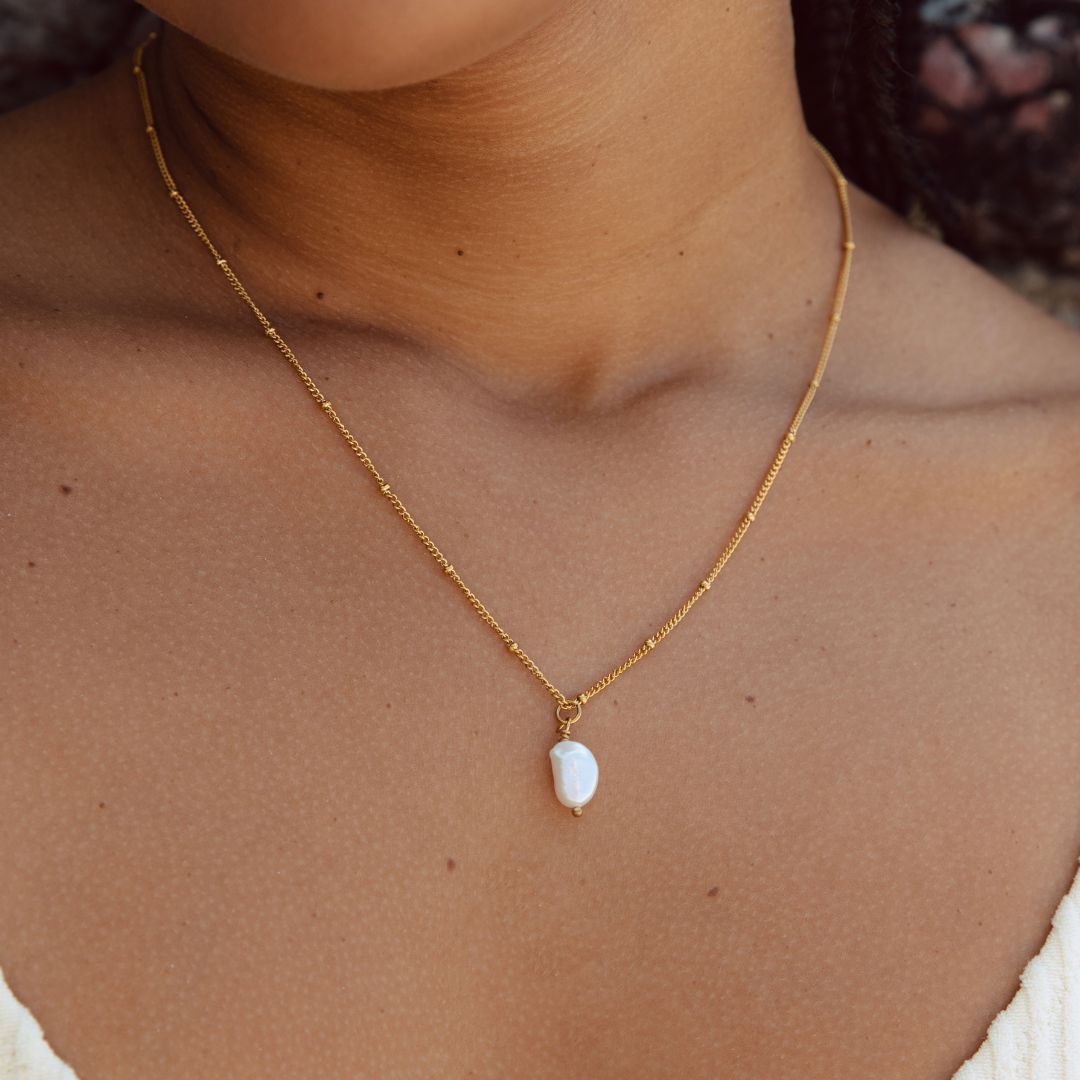


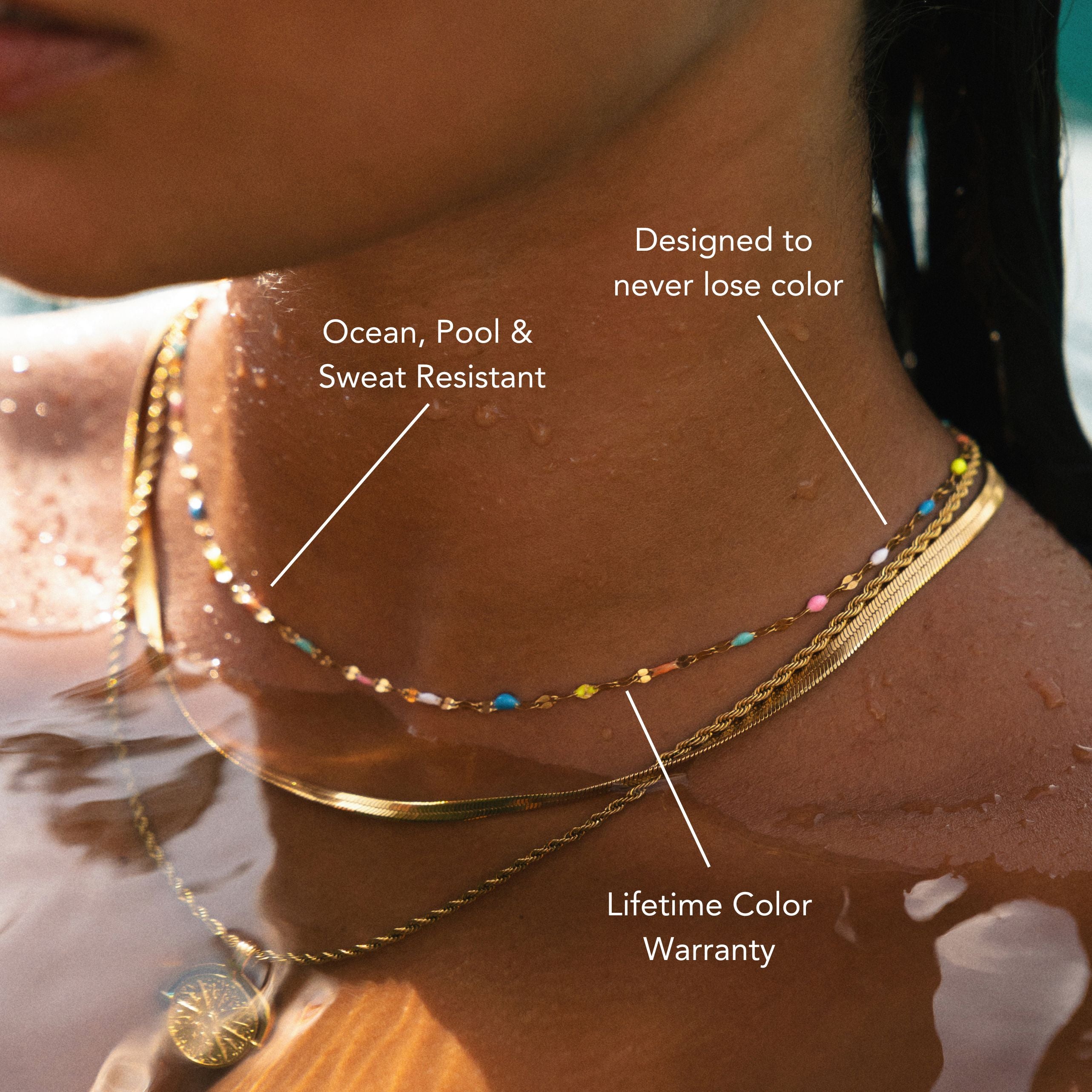
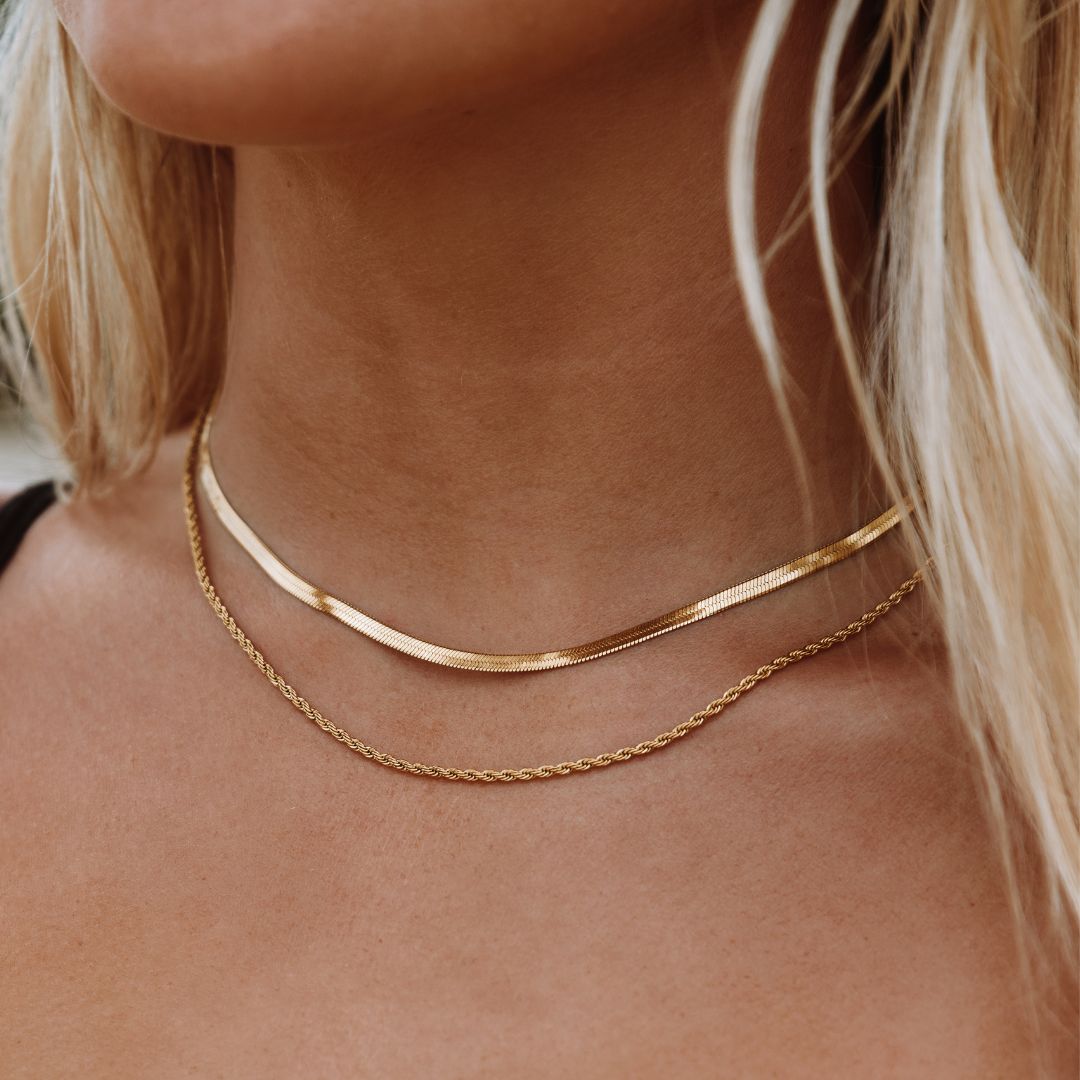






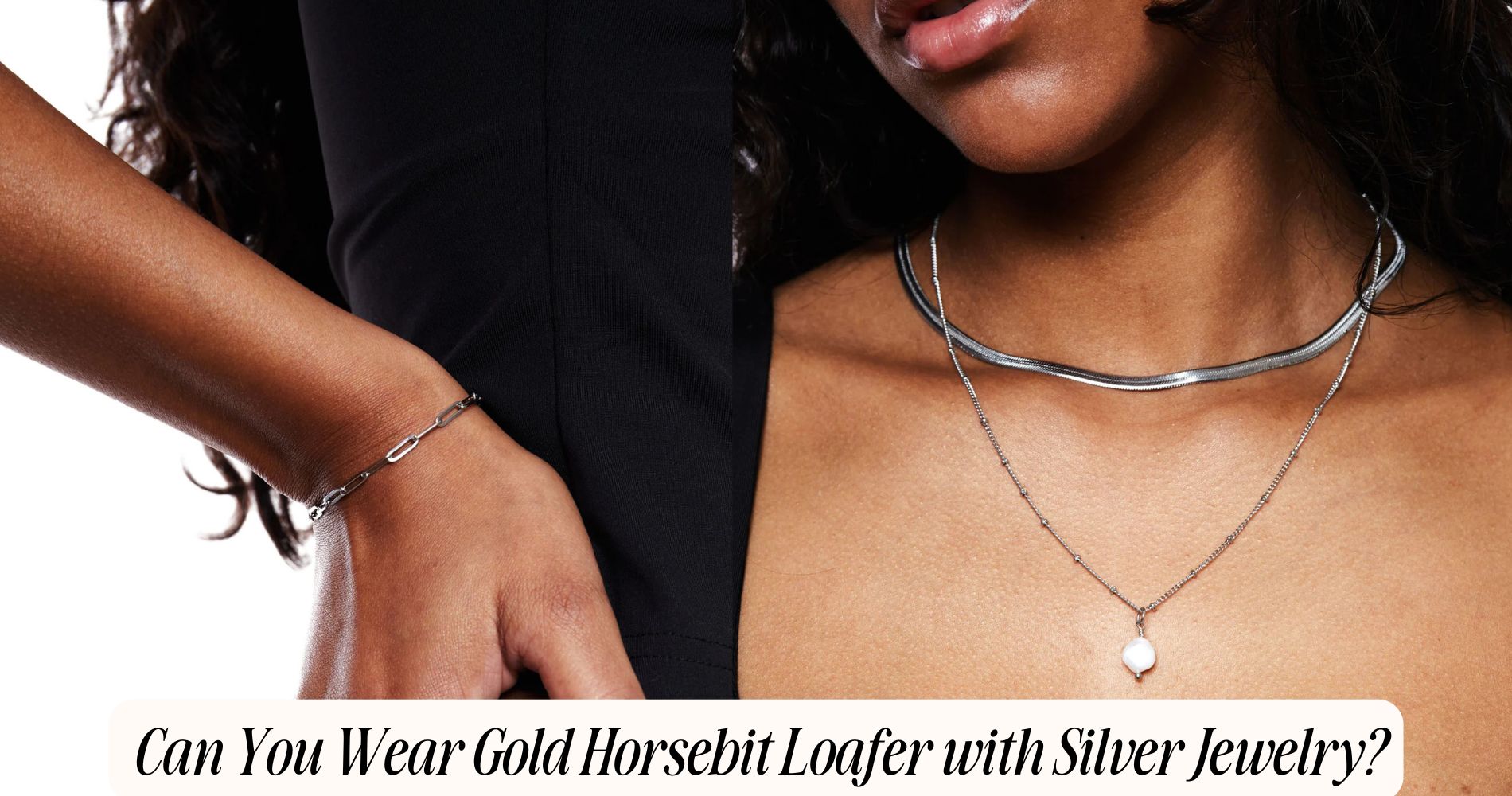




Leave a comment
This site is protected by hCaptcha and the hCaptcha Privacy Policy and Terms of Service apply.